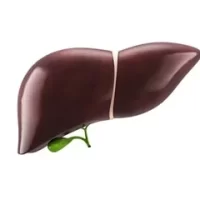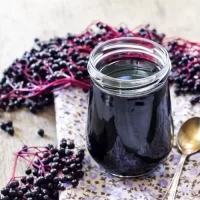The past few years, instead of the traditional polish (from the early 1900s), the gel manicures have become the preferred nail manicure for many women. The main reason to be more popular is because it lasts 2-3 times longer than a regular manicure, and the shiny lasts until you remove it.
If you look at those preferences, it really sounds well and harmless. However, they can last that long because nails sit under an ultraviolet (UV) light multiple times. So, you should think about the number of times that your nails have been exposed to (UV) radiation.
Here, we will share the story of Lauren Ann’s best friend who developed a skin cancer called melanoma, after she routinely got her gel manicure.
Her doctors concluded that the main reason for developing cancer was from doing gel manicures and the exposure to the UV light. THANK GOD she was smart enough and after dermatologist diagnoses of a rare form of cancer, she did a surgery.
She, luckily caught the skin cancer before it spread elsewhere and she warns everyone else who frequently enjoys getting gel manicure of the harmful negative effect of UV radiation.
Are Nail Lamps Really Linked to Skin Cancer?
According to the evidence from research, the UVA rays from nail curing lamps are strong enough to pose a skin cancer threat. In fact, the researchers found that the nail lamps are safe for regular use.
There are different opinions about the UV nail products, some from the producers, which state about their safety and others from some organizations and consumers that are complaining about the risk for cancer.
According to the Skin Cancer Foundation Senior Vice President Elizabeth K. Hale, MD, UV radiation-emitting nail lamps have become a question of manicure safety. Their use for speeding drying and setting the gel manicures can be risky, because of their predominant producing of UVA rays. These produced rays have been linked to both premature skin aging and skin cancer.
In order to get safe gel manicures, you can apply a broad spectrum (UVA/UVB) sunscreen prior to UV light exposure. However, the safest bet is to allow nails to air-dry naturally. You should be aware that all nail lamps produce UV radiation.
Even though the FDA has released a comment about nail lamp safety, they don’t pay attention to the long-term risks from regular exposure to nail lamps over the years.
However, the FDA has noted the following create increased sensitivity to UVA rays:
– Contraceptives
– Antibiotics
– Estrogen hormone medication
– Some supplements including St. John’s Worts
– A variety of lotions, skin products, and fragrances
To conclude, there is more evidence from independent sources that have pointed out an increased risk of melanoma/skin cancer with regular use of UV/LED nail lamps. Our beliefs are that it makes sense, especially on the side of caution, and taking simple steps to decrease your risk of cancer.
What is Melanoma?
Melanoma is one of the most common types of skin cancer, which develops when damaged cells called melanocyte grow uncontrollably. They contain a pigment called melanin, which darkens the skin when exposed to UV radiation.
The UV radiation can lead to premature skin aging, even the skin cancer, which means that the tanning beds, especially can damage the skin. The younger people (under 35) are at higher risk of melanoma by 75 percent.
When the skin is overexposed to UV light it burns the skin, but also it damages melanocytes and those cells can travel to other parts of the body. According to medical reports, there are around 3.5 million skin cancer diagnoses, of which 2 percent are melanoma. Melanoma accounts for most skin cancer deaths.
Symptoms and Treatment of Melanoma Skin Cancer
The most known method of healing melanoma is so-called ABCDE, which actually means:
– Asymmetry: An irregular shape of the mole
– Border: Not smooth, but irregular or notched edge
– Color: Uneven shading or dark spots of the mole
– Diameter: Approximately the size of a pencil eraser.
– Evolving or Elevation: The spot is changing in size, texture or shape
If you want to be sure about the mole, you need to visit a doctor. Cancer can be treated in a way, which depends on the stage. Removing cancer by surgery is often prescribed, followed by a chemotherapy or radiation, which will eliminate the cancer cells.
Tips for the Safest Manicure
Even the switching to a regular polish in order to avoid the dangers of gel nail polish is not safe. The results of the research study (conducted to test for toxic chemicals in 24 women), showed signs of triphenyl phosphate (TPHP), even after 10 hours of applying nail polish. The TPHP can disrupt the human endocrine system, which is responsible for controlling your hormones.
We recommend you to paint your nails with non-toxic polish (brands like Zoya, Honeybee Gardens, Suncoat). Even, a better alternative is to go polish-free.
Conclusion
Everyone should be fully mindful of the exposure to UV rays and to opt for a safer nail care routine. By doing so, you will reduce your risks of skin cancer (melanoma).
For protecting your skin internally, here is a list of foods you should incorporate into your diet












